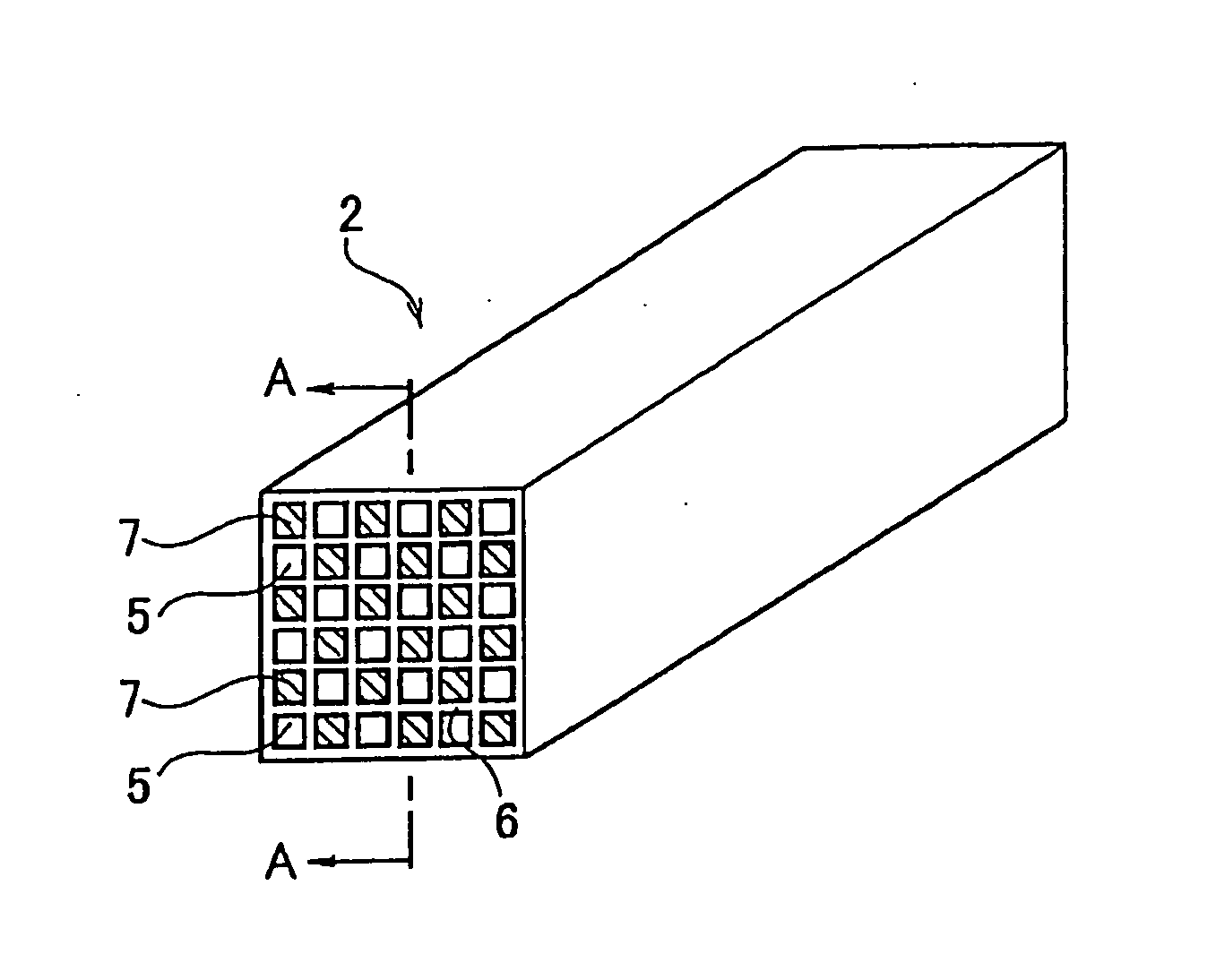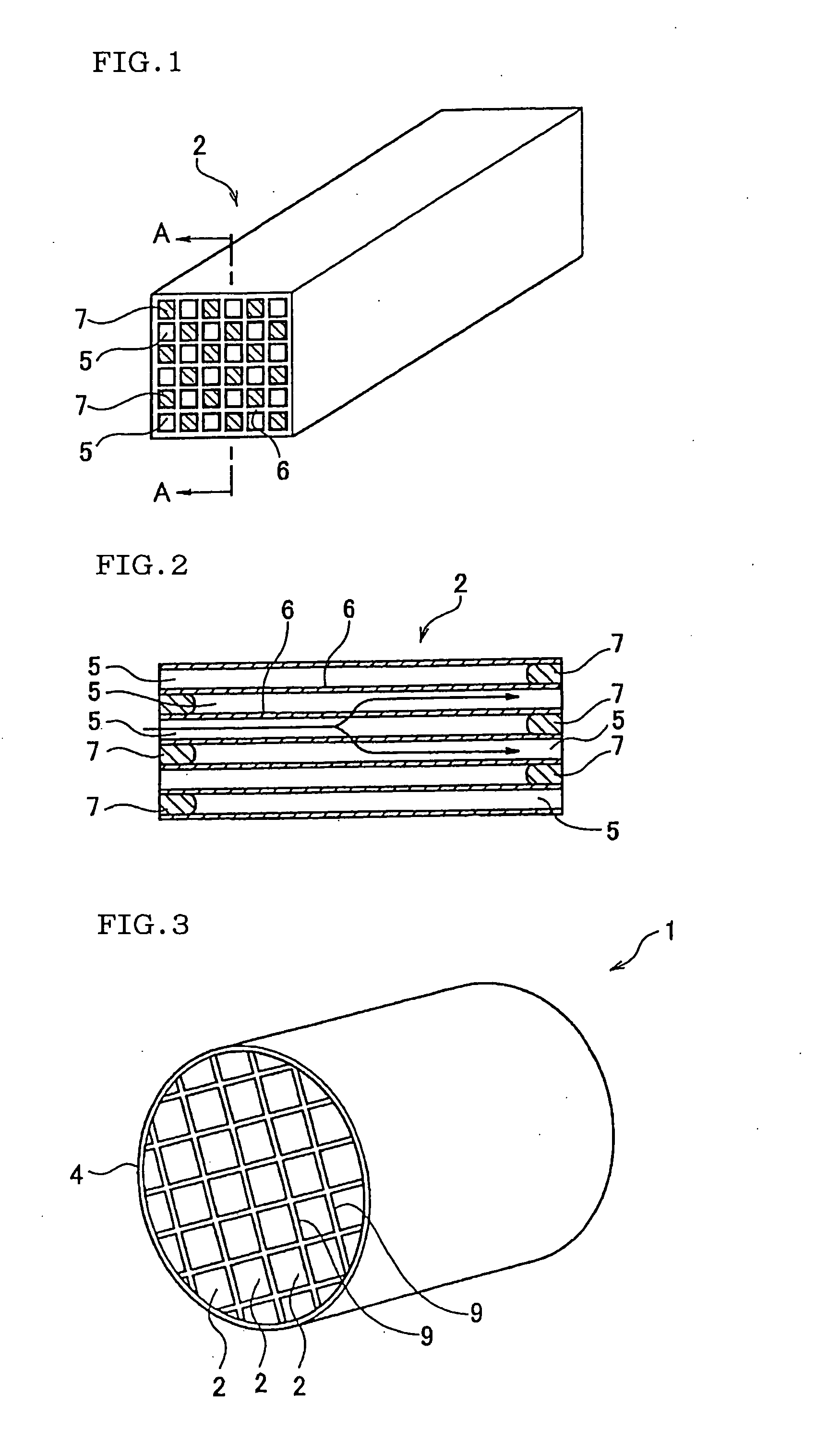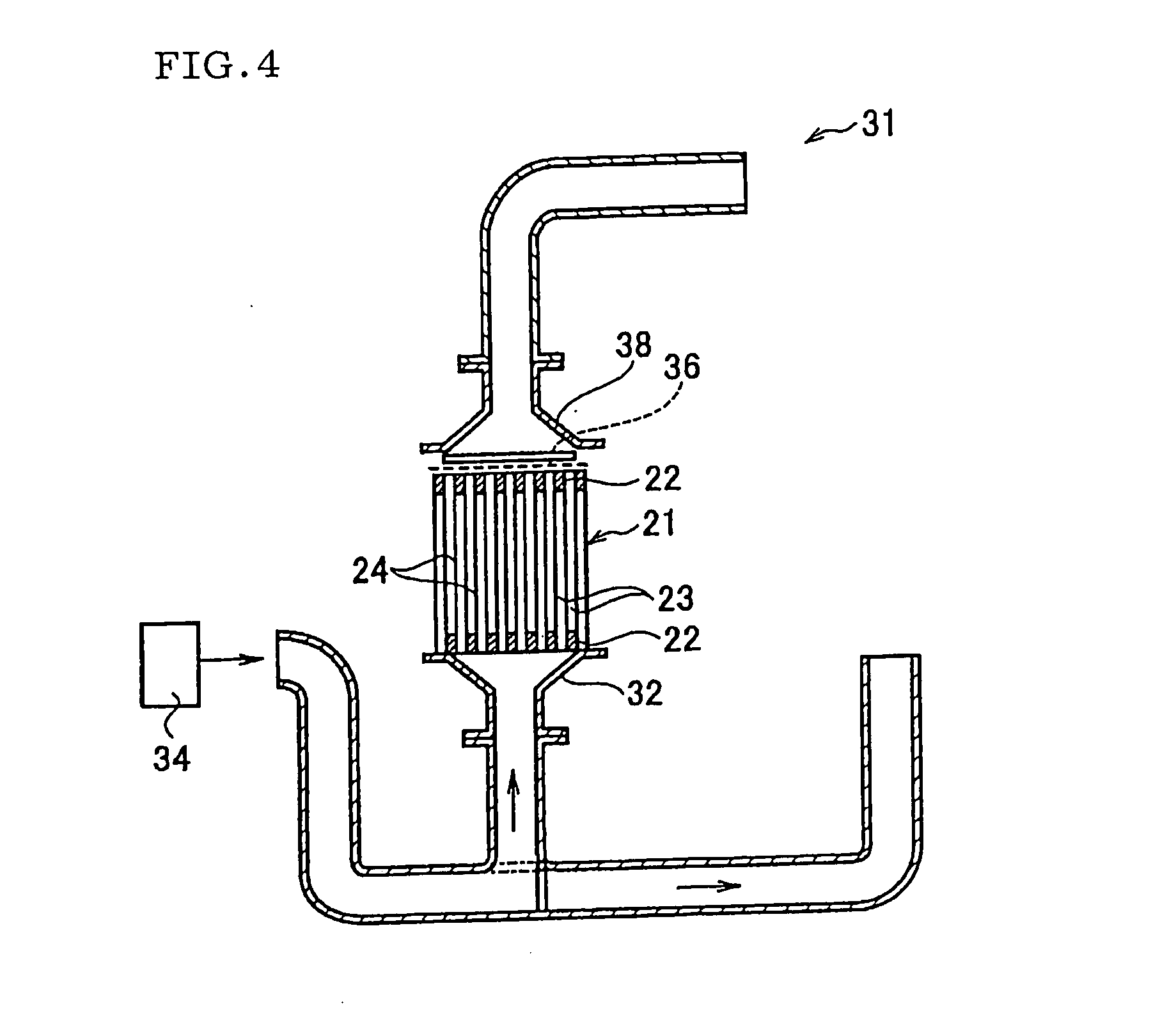Method of producing honeycomb structure body
a honeycomb and structure technology, applied in the field of honeycomb structure production, can solve the problems of reducing yield, insufficient press-bonding at the intersecting point, and cell cracks
- Summary
- Abstract
- Description
- Claims
- Application Information
AI Technical Summary
Benefits of technology
Problems solved by technology
Method used
Image
Examples
example 10
[0128] (Example 10)
[0129] A ceramic formed body was prepared in the same manner as in Example 5 except that a pore-forming material was mixed in addition to the water-absorbing resin D. The results of the evaluations and measurements are shown in Table 5. The honeycomb structure obtained in Example 10 had further enhanced size accuracy.
TABLE 1Metal SiPore-formingWater-SiC powderpowdermaterialabsorbing resincompoundingcompoundingcompoundingcompounsingTime forSegmentratioratioratioWaterratiokneadingNo.(parts by mass)(parts by mass)(parts by mass)(parts by mass)(parts by mass)(minute)Example 11802015340.541Example 2280201549241Example 338020151091039Comp. Ex. 1480201529—63
[0130]
TABLE 2PerpendicularityRangeBendSegment No.(°)(mm)(mm)Example 110.680.310.40Example 220.710.410.25Example 330.710.560.41Comp. Ex. 141.220.860.52
[0131]
TABLE 3frequency ofNumber of celldefect generationcrack(s) / Yield due to cellPorosityin segmentnumber ofcrackSegment No.(%)(n = 100)defect(s)(%)Example 115454 / 596...
example 11
[0134] (Example 11)
[0135] [Method for producing a honeycomb formed body]
[0136] As a raw material for aggregate particles, there has been prepared a cordierite-forming material having a compounding ratio of 40% by mass of talc (average particle diameter of 21 μm), 18.5% by mass of kaolin (average particle diameter of 11 μm), 14.0% by mass of alumina (average particle diameter of 7 μm), 15% by mass of aluminum hydroxide (average particle diameter of 2 μm), and 12.5% by mass of silica (average particle diameter of 25 μm).
[0137] To 100 parts by mass of the above raw material for aggregate particles were added 4.0 parts by mass of a water-absorbing resin (water-absorption ratio of 10 times, average particle diameter of 32 μm) as the first pore-forming material and 5.0 parts by mass of hydroxypropylmethyl cellulose as an organic binder. They were mixed for three minutes with a ploughshare mixer (Commercial name: Ploughshare Mixer, produced by Pacific Machinery & Engineering Co., Ltd.). A...
PUM
| Property | Measurement | Unit |
|---|---|---|
| Temperature | aaaaa | aaaaa |
| Fraction | aaaaa | aaaaa |
| Time | aaaaa | aaaaa |
Abstract
Description
Claims
Application Information
 Login to View More
Login to View More - R&D
- Intellectual Property
- Life Sciences
- Materials
- Tech Scout
- Unparalleled Data Quality
- Higher Quality Content
- 60% Fewer Hallucinations
Browse by: Latest US Patents, China's latest patents, Technical Efficacy Thesaurus, Application Domain, Technology Topic, Popular Technical Reports.
© 2025 PatSnap. All rights reserved.Legal|Privacy policy|Modern Slavery Act Transparency Statement|Sitemap|About US| Contact US: help@patsnap.com



